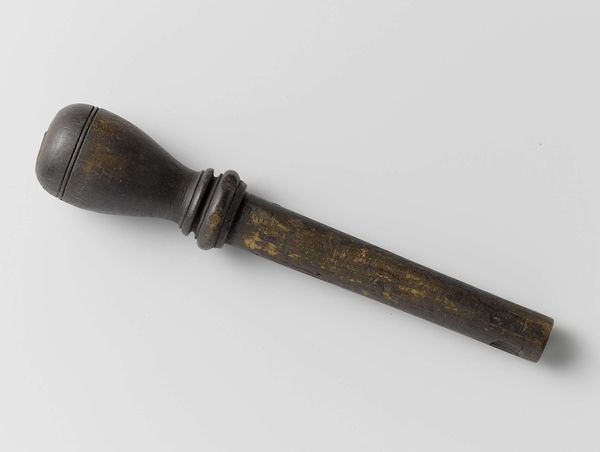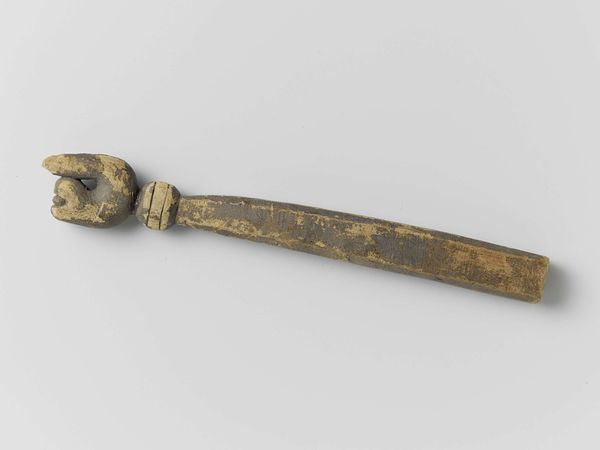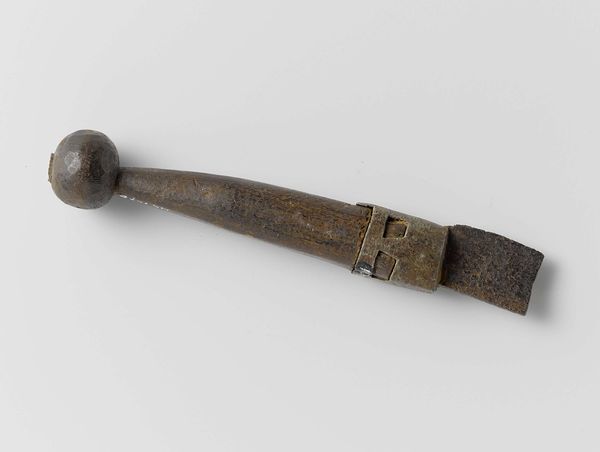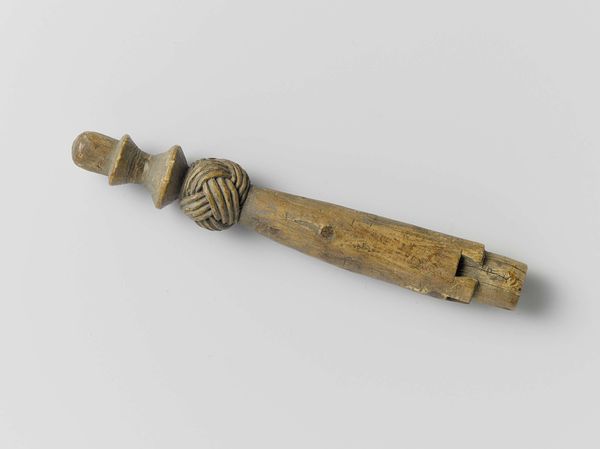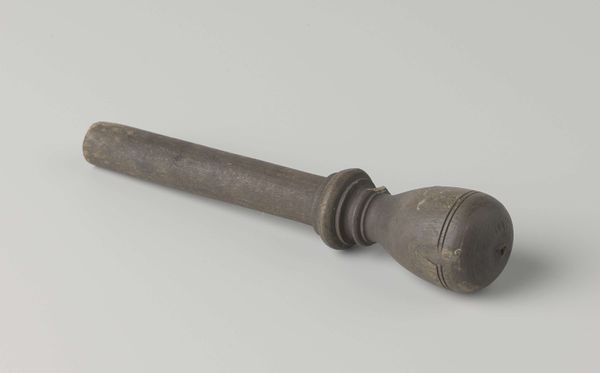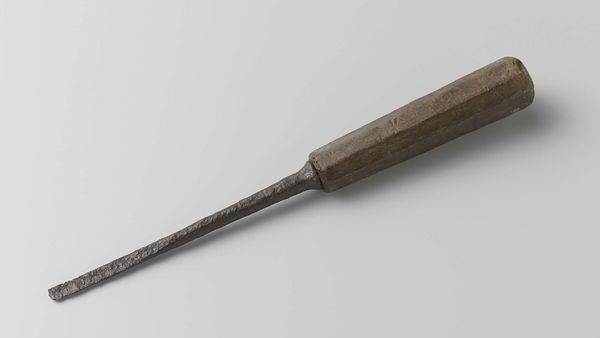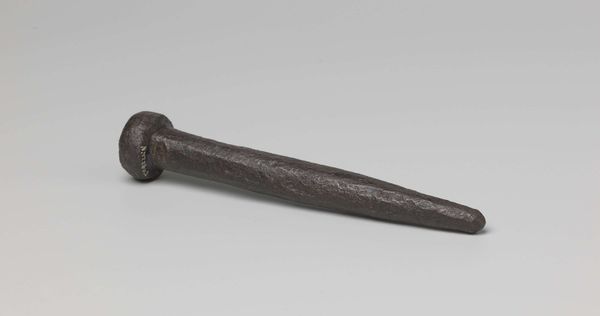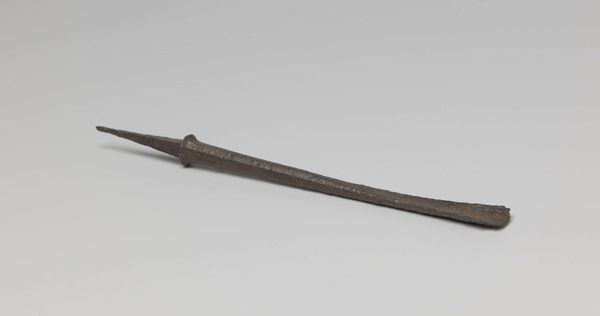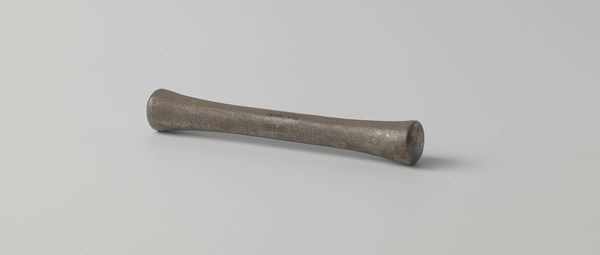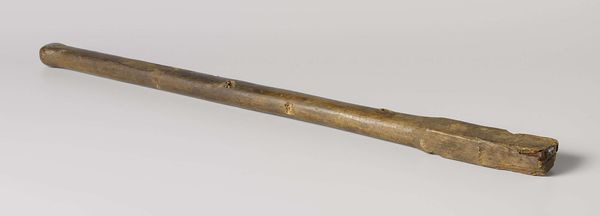
carving, wood
#
medieval
#
carving
#
geometric
#
wood
Dimensions: height 13.7 cm, width 1.5 cm, depth cm
Copyright: Rijks Museum: Open Domain
Curator: Look at this intriguing object from around 1590-1596, currently held at the Rijksmuseum. It is titled "Heft met knop en een fries met insnijdingen"—or Handle with knob and a frieze with incisions. Editor: Well, right away, I see something rather primal. It feels almost totemic. The repeated geometric patterns, especially, lend it a symbolic weight beyond its mere physical form. Curator: Exactly. While attributed to an anonymous artist, the object speaks volumes about the time and its societal framework. This carved wooden tool exemplifies a kind of functional folk art. I’m immediately drawn to the maker’s process. How were these incisions achieved? The surface is rough, which could suggest a more primitive tool was used, revealing clues about local woodworking practices. Editor: Yes, the simplicity of the incisions is key. Those zig-zag patterns might have echoed beliefs related to protection or ancestors. Considering medieval art traditions, the careful carving of repeating motifs strongly suggests the maker imbued the object with a sense of purpose reaching past the utilitarian. Curator: The use of wood further contextualizes this artifact. What was the provenance of the wood, and how available was this raw material? That knowledge helps determine what class of artisan may have worked with the piece and, also, the cultural sphere the artisan operated in. The transition from raw material to refined, albeit functional, art piece is fascinating. Editor: The very handle shape, with the knob-like head, draws the eye upward. The progression toward geometric carvings tells me about hierarchies, both artistic and possibly societal. Visually, it asks the observer to read vertically, giving meaning through sequenced imagery. Curator: Absolutely. It encourages speculation on its usage. Was this a handle for a tool? If so, the incisions become not merely ornamentation but maybe a means of improving grip, revealing function melding into craftsmanship. Editor: A fusion between practical tool and an invocation. This is something crafted not merely for usefulness, but for carrying messages forward in time through geometric and deliberate crafting choices. It allows the past to resonate. Curator: Indeed. Studying process unveils insights into both its mundane utility and deeper cultural value, connecting to those medieval modes of creation and consumption. Editor: It transforms the seemingly mundane into something of lingering symbolic resonance, offering insight into a long ago history still within our collective memory.
Comments
No comments
Be the first to comment and join the conversation on the ultimate creative platform.
